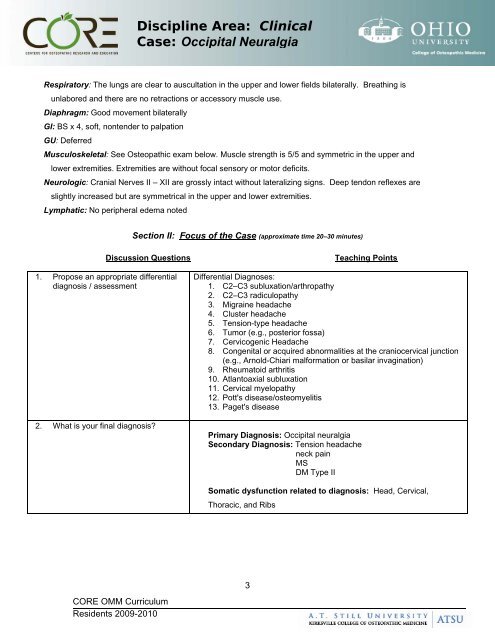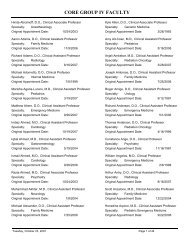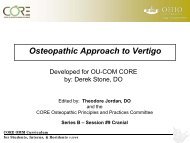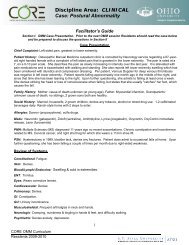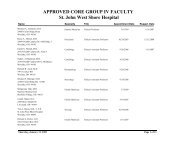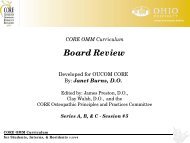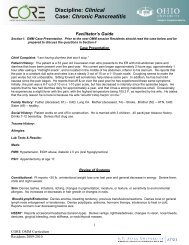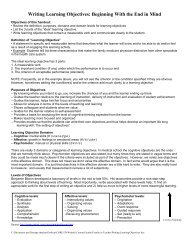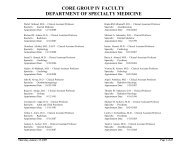Occipital Neuralgia
Occipital Neuralgia
Occipital Neuralgia
You also want an ePaper? Increase the reach of your titles
YUMPU automatically turns print PDFs into web optimized ePapers that Google loves.
Discipline Area: ClinicalCase: <strong>Occipital</strong> <strong>Neuralgia</strong>Respiratory: The lungs are clear to auscultation in the upper and lower fields bilaterally. Breathing isunlabored and there are no retractions or accessory muscle use.Diaphragm: Good movement bilaterallyGI: BS x 4, soft, nontender to palpationGU: DeferredMusculoskeletal: See Osteopathic exam below. Muscle strength is 5/5 and symmetric in the upper andlower extremities. Extremities are without focal sensory or motor deficits.Neurologic: Cranial Nerves II – XII are grossly intact without lateralizing signs. Deep tendon reflexes areslightly increased but are symmetrical in the upper and lower extremities.Lymphatic: No peripheral edema notedSection II: Focus of the Case (approximate time 20–30 minutes)Discussion Questions1. Propose an appropriate differentialdiagnosis / assessment2. What is your final diagnosis?Teaching PointsDifferential Diagnoses:1. C2–C3 subluxation/arthropathy2. C2–C3 radiculopathy3. Migraine headache4. Cluster headache5. Tension-type headache6. Tumor (e.g., posterior fossa)7. Cervicogenic Headache8. Congenital or acquired abnormalities at the craniocervical junction(e.g., Arnold-Chiari malformation or basilar invagination)9. Rheumatoid arthritis10. Atlantoaxial subluxation11. Cervical myelopathy12. Pott's disease/osteomyelitis13. Paget's diseasePrimary Diagnosis: <strong>Occipital</strong> neuralgiaSecondary Diagnosis: Tension headacheneck painMSDM Type IISomatic dysfunction related to diagnosis: Head, Cervical,Thoracic, and RibsCORE OMM CurriculumResidents 2009-20103


